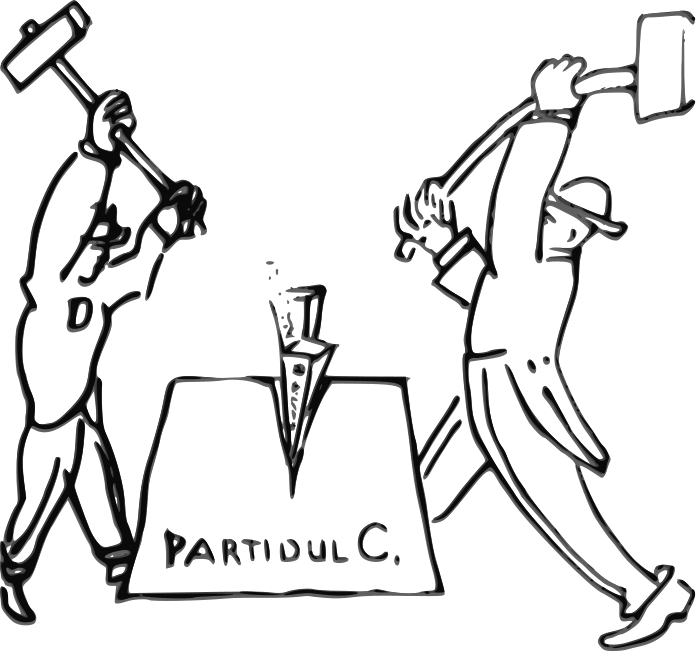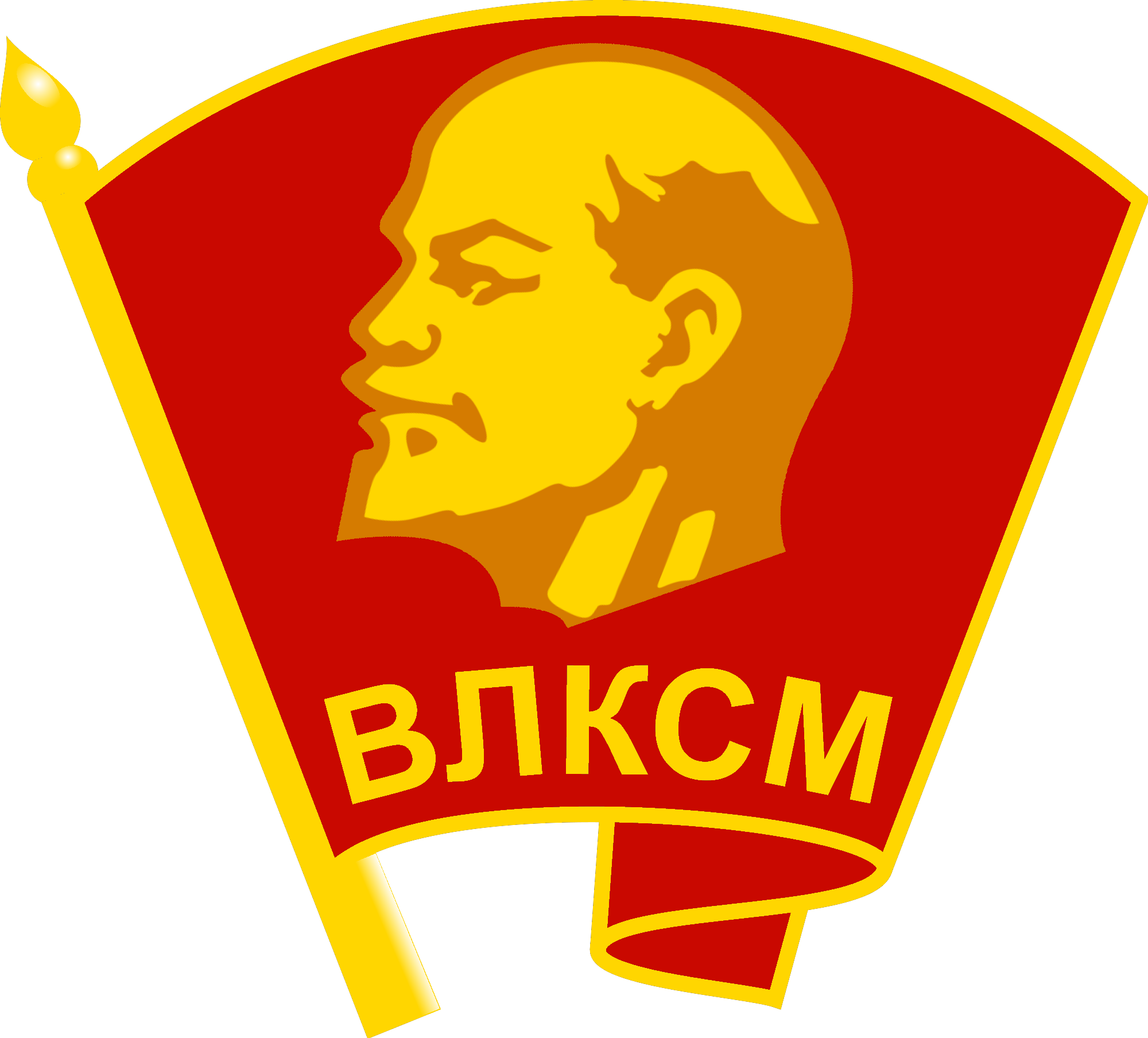|
Organisation Of The Communist Party Of The Soviet Union
The organization of the Communist Party of the Soviet Union was based on the principles of democratic centralism. The governing body of the Communist Party of the Soviet Union (CPSU) was the Party Congress, which initially met annually but whose meetings became less frequent, particularly under Joseph Stalin (dominant from the late 1920s to 1953). Party Congresses would elect a Central Committee which, in turn, would elect a Politburo and a Secretariat. Under Stalin, the most powerful position in the party became the General Secretary, who was elected by the Politburo and Secretariat. In 1952 the title of ''General Secretary'' became ''First Secretary'' and the ''Politburo'' became the ''Presidium''; the names reverted to their former forms under Leonid Brezhnev in 1966. In theory, supreme power in the party was invested in the Party Congress. However, in practice the power structure became reversed and, particularly after the death of Lenin in January 1924, supreme power became ... [...More Info...] [...Related Items...] OR: [Wikipedia] [Google] [Baidu] |
Democratic Centralism
Democratic centralism is a practice in which political decisions reached by voting processes are binding upon all members of the political party. It is mainly associated with Leninism, wherein the party's political vanguard of professional revolutionaries practised democratic centralism to elect leaders and officers, determine policy through free discussion, and decisively realise it through united action.Lenin, Vladimir (1906)"Report on the Unity Congress of the R.S.D.L.P." Marxists Internet Archive. Retrieved 14 February 2020. Democratic centralism has also been practised by social democratic and |
Komsomol
The All-Union Leninist Young Communist League (russian: link=no, Всесоюзный ленинский коммунистический союз молодёжи (ВЛКСМ), ), usually known as Komsomol (; russian: Комсомол, links=no ()), a syllabic abbreviation of the Russian ), was a political youth organization in the Soviet Union. It is sometimes described as the youth division of the Communist Party of the Soviet Union (CPSU), although it was officially independent and referred to as "the helper and the reserve of the CPSU". The Komsomol in its earliest form was established in urban areas in 1918. During the early years, it was a Russian organization, known as the Russian Young Communist League, or RKSM. During 1922, with the unification of the USSR, it was reformed into an all-union agency, the youth division of the All-Union Communist Party. It was the final stage of three youth organizations with members up to age 28, graduated at 14 from the Young Pioneer ... [...More Info...] [...Related Items...] OR: [Wikipedia] [Google] [Baidu] |
Communist Party Of Byelorussia
The Communist Party of Byelorussia (CPB; russian: Коммунистическая партия Белоруссии; be, Камуністычная партыя Беларусі) was the ruling communist party of the Byelorussian Soviet Socialist Republic, a constituent republic of the Soviet Union from 1922, that existed from 1917 to 1993. The party was founded in 1917 as the Communist Party (Bolsheviks) of Byelorussia (russian: Коммунистическая партия (большевиков) Белоруссии) following the Russian Revolution of 1917 as part of the Russian Communist Party (bolsheviks) led by Vladimir Lenin on December 30–31, 1918 with 17,800 members. It was important in creating the Byelorussian Soviet Republic in January 1919. From February 1919 until 1920 it functioned as a single organisation together with the Communist Party of Lithuania, known as the Communist Party (bolsheviks) of Lithuania and Belorussia. It was renamed to the ''Communist Pa ... [...More Info...] [...Related Items...] OR: [Wikipedia] [Google] [Baidu] |
Russian Soviet Federative Socialist Republic
The Russian Soviet Federative Socialist Republic, Russian SFSR or RSFSR ( rus, Российская Советская Федеративная Социалистическая Республика, Rossíyskaya Sovétskaya Federatívnaya Socialistíčeskaya Respúblika, rɐˈsʲijskəjə sɐˈvʲetskəjə fʲɪdʲɪrɐˈtʲivnəjə sətsɨəlʲɪˈsʲtʲitɕɪskəjə rʲɪˈspublʲɪkə, Ru-Российская Советская Федеративная Социалистическая Республика.ogg), previously known as the Russian Soviet Republic and the Russian Socialist Federative Soviet Republic as well as being unofficially known as Soviet Russia,Declaration of Rights of the laboring and exploited people, article I. the Russian Federation or simply Russia, was an Independence, independent Federalism, federal socialist state from 1917 to 1922, and afterwards the largest and most populous of the Republics of the Soviet Union, Soviet socialist republics of the So ... [...More Info...] [...Related Items...] OR: [Wikipedia] [Google] [Baidu] |
Communist Party Of The Russian Soviet Federative Socialist Republic
The Communist Party of the Russian Soviet Federative Socialist Republic (CP RSFSR; russian: Коммунистическая партия Российской Советской Федеративной Социалистической Республики; КП РСФСР; ''Kommunisticheskaya partiya Rossiyskoy Sovetskoy Federativnoy Sotsialisticheskoy Respubliki'', ''KP RSFSR''), often referred to as the Russian Communist Party or the Communist Party of Russia, was a communist political party in the Russian SFSR. The Communist Party of the Russian SFSR was founded in 1990.Harris, Jonathan. Subverting the System: Gorbachev's Reform of the Party's Apparat, 1986–1991'. Lanham, MD: Rowman & Littlefield, 2005. pp. 110–3. At this point, the Communist Party of the Russian SFSR being the republican branch of the Communist Party of the Soviet Union, organized around 58% of the total Communist Party membership. Politically, it became a centre for communist opponents of Gorbachev's leade ... [...More Info...] [...Related Items...] OR: [Wikipedia] [Google] [Baidu] |
Conference Of The CPSU
A conference is a meeting of two or more experts to discuss and exchange opinions or new information about a particular topic. Conferences can be used as a form of group decision-making, although discussion, not always decisions, are the main purpose of conferences. History The first known use of "conference" appears in 1527, meaning "a meeting of two or more persons for discussing matters of common concern". It came from the word "confer", which means "to compare views or take counsel". However the idea of a conference far predates the word. Arguably, as long as there have been people, there have been meetings and discussions between people. Evidence of ancient forms of conference can be seen in archaeological ruins of common areas where people would gather to discuss shared interests such as "hunting plans, wartime activities, negotiations for peace or the organisation of tribal celebrations". Since the 1960s, conferences have become a lucrative sector of the tourism indus ... [...More Info...] [...Related Items...] OR: [Wikipedia] [Google] [Baidu] |
CPSU Central Auditing Commission
Central Auditing Commission (CAC), (russian: Центральная ревизионная комиссия КПСС), Centralnaya revizionnaya komissiya) was a supervisory organ within the Communist Party of the Soviet Union. Similar organs existed in a number of other communist parties, which were analogous with that of the CPSU. The Central Auditing Commission was elected by and reported to the CPSU Party Congress and its membership was just below that of the CPSU Central Committee The Central Committee of the Communist Party of the Soviet Union, – TsK KPSS was the executive leadership of the Communist Party of the Soviet Union, acting between sessions of Congress. According to party statutes, the committee direct ... within the intraparty bureaucratic hierarchy. The Central Auditing Commission supervised the expeditious and proper handling of affairs by the central bodies of the Party, and audited the accounts of the treasury and the enterprises of the CPSU Centra ... [...More Info...] [...Related Items...] OR: [Wikipedia] [Google] [Baidu] |
CPSU Party Control Committee
The Central Control Commission (russian: Центральная Контрольная Комиссия, ''Tsentral'naya Kontrol'naya Komissiya'') was a supreme disciplinary body (since 1934 within the Central Committee of the Communist Party of the Soviet Union, Central Committee) of the Communist Party of the Soviet Union. Its members were elected at plenary sessions of the Central Committee. History and function At first there was a single Control Commission, which in 1921 was divided into the Central Auditing Commission of the Communist Party of the Soviet Union, Central Auditing Commission, responsible for financial control, and the Central Control Commission, responsible for controlling party discipline. The Party Control Committee oversaw the party discipline of the Party members and candidate Party members in terms of their observance of the programme and regulations of the Party, state discipline and Party ethics. It administered punishments, including expulsions from th ... [...More Info...] [...Related Items...] OR: [Wikipedia] [Google] [Baidu] |
Human Resource Management
Humans (''Homo sapiens'') are the most abundant and widespread species of primate, characterized by bipedalism and exceptional cognitive skills due to a large and complex brain. This has enabled the development of advanced tools, culture, and language. Humans are highly social and tend to live in complex social structures composed of many cooperating and competing groups, from families and kinship networks to political states. Social interactions between humans have established a wide variety of values, social norms, and rituals, which bolster human society. Its intelligence and its desire to understand and influence the environment and to explain and manipulate phenomena have motivated humanity's development of science, philosophy, mythology, religion, and other fields of study. Although some scientists equate the term ''humans'' with all members of the genus ''Homo'', in common usage, it generally refers to ''Homo sapiens'', the only extant member. Anatomically mode ... [...More Info...] [...Related Items...] OR: [Wikipedia] [Google] [Baidu] |
Orgburo
The Orgburo (russian: Оргбюро́), also known as the Organisational Bureau (russian: организационное бюро), of the Central Committee of the Communist Party of the Soviet Union existed from 1919 to 1952, when it was abolished at the 19th Congress of the Communist Party and its functions were transferred to the enlarged Secretariat. Role The Orgburo was established during Lenin's reign to make important decisions about organisational work in the Soviet Union. It oversaw the work of local Party committees and had the power to select and place Communist Party members in positions as it saw fit. The functions of the Orgburo and the Politburo were often interconnected, but the latter was ultimately the final decision-maker. While the Politburo mostly focused on strategic planning and monitoring of the people and status of the country, the Orgburo was tasked with overseeing the Party cadre and its assignment to various positions and duties, presumably in fu ... [...More Info...] [...Related Items...] OR: [Wikipedia] [Google] [Baidu] |
Congress Of The CPSU
The Congress of the Communist Party of the Soviet Union (russian: съезд КПСС) was the supreme decision-making body of the Communist Party of the Soviet Union. Its meetings served as convention of all party delegates and their predecessors. Between the congresses the party was ruled by the Central Committee. Over the course of the party's history, the name was changed in accordance with the current name of the party at the time. The frequency of party congresses varied with the meetings being annual events in the 1920s while no congress was held at all between 1939 and 1952. After the death of Joseph Stalin, the congresses were held every five years. Keys Convocations See also * Organization of the Communist Party of the Soviet Union The organization of the Communist Party of the Soviet Union was based on the principles of democratic centralism. The governing body of the Communist Party of the Soviet Union (CPSU) was the Party Congress, which initially met annua ... [...More Info...] [...Related Items...] OR: [Wikipedia] [Google] [Baidu] |
Central Committee Of The CPSU
The Central Committee of the Communist Party of the Soviet Union, – TsK KPSS was the executive leadership of the Communist Party of the Soviet Union, acting between sessions of Congress. According to party statutes, the committee directed all party and governmental activities. Its members were elected by the Party Congress. During Vladimir Lenin's leadership of the Communist Party, the Central Committee functioned as the highest party authority between Congresses. However, in the following decades the ''de facto'' most powerful decision-making body would oscillate back and forth between the Central Committee and the Political Bureau or Politburo (and during Joseph Stalin, the Secretariat). Some committee delegates objected to the re-establishment of the Politburo in 1919, and in response, the Politburo became organizationally responsible to the Central Committee. Subsequently, the Central Committee members could participate in Politburo sessions with a consultative voic ... [...More Info...] [...Related Items...] OR: [Wikipedia] [Google] [Baidu] |




